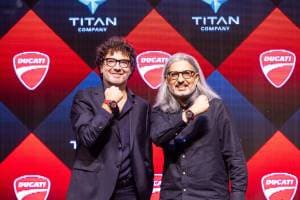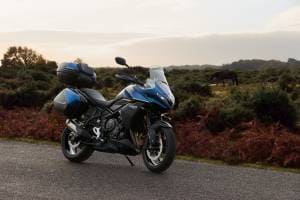2016 Ducati 959 Panigale road test review
Cresting the straight at just over 220kmph, braking downhill to about 140kmph. Turning the Ducati 959 Panigale, feeling the momentum that inertia imparts. Opening the gas back up to 170kmph. Buriram circuit in Thailand. The memories are still as fresh as the flowers from this morning. The Ducati 959 Panigale is the entry sportsbike for the Italian manufacturer. Above it are the harder, more serious Panigales. Below it is the (939) Supersport, which is designed to be more friendly to riding off the track and hence it does not wear the hallowed Panigale name. But the fact is that every motorcycle will get ridden in the real world. Especially a motorcycle like the 959 in country like ours with just three racetracks. But first, a little history.
The background
The Ducati 899 Panigale traces back to the 749 which was regarded as a motorcycle even more special than the 916. Yes. And the reason was simple, and germane to this story. The 749 possessed all the melancholy beauty of the 916 but its smaller engine and more manageable power made it vastly better to ride than the 916. And many found the 749 to their taste. At that time, production motorcycle racing included the supersport class which allowed 750 twins to race 600 in-line fours.
In time, the direct connection between racing and the sportsbike has weakened. The 600 fours don't sell that well and the mid-displacement sportsbike is an odd category from the 600cc R6 to the 'cheating' 636cc Ninja ZX-6R. Ducati played this with the 899 Panigale and now, the 959 replaces that motorcycle. You might think the gap to the big Panigales from a 955cc 90° V-twin isn't much.
But there is a difference. The 959 Panigale is expected to be a road bike that can handle the track while the bigger sportsbikes are designed to slay apexes and win races.
So, does it? Can the 959 Panigale rock the road and the track both? One step at a time. Let's begin with its looks.
Design, finish and build
Ducati has always known how to make great motorcycles. And yet, the 959 is special. The sleek headlights are distinctive and the way the tail unit arcs over and leaves an air gap is just wonderful. The tail lamps, the fairing's shape. I could go on and on. The fact is that the motorcycle looks achingly beautiful.
The success of the design is further underlined by the fact that the Panigale design is not technically all-new. By now familiarity should bring at least some ennui but the compact, sleek shape of the 959 still draws my eyes and holds my gaze.
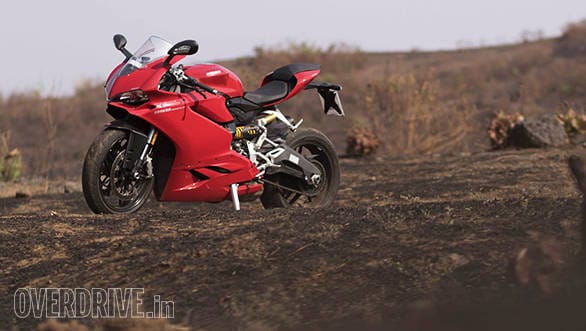
Build quality is good - most Ducatis are built well these days. But finish levels on Ducatis are variable. Some of the nakeds aren't as well-made as you expect. Thankfully, despite the indifferent plastics in the matte black panels that form the boot guard over the rear shock and the heat shield over the exhaust header that loops off the rear cylinder, the motorcycle feels well finished.
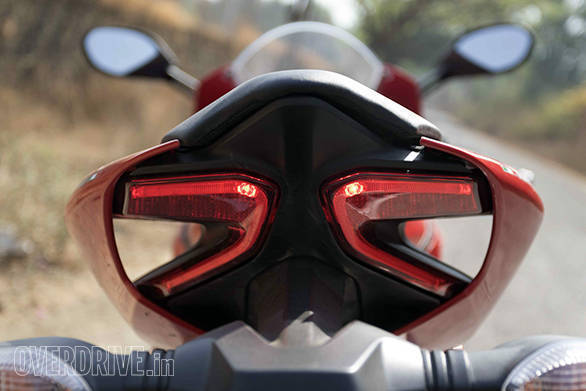
It looks distinctive, fast and sleek. And I am happy to say, that is how it goes as well.
Engine, performance and economy
The 955cc 90° desmo V-twin has no technology surprises. It's a straight-forward 8-valve DOHC, oversquare design that makes 157PS. That used to be a lot but with the arrival of electronics allows relatively new hands access power levels that would have been deemed dangerous a few years ago. So mechanically, the Ducati is powerful and it all the accoutrements of performance. That's a slipper clutch, 6-speed gearbox, liquid cooling and fuel injection.

But backing that is a suite of electronics. And part of the magic is in there. Ducati articulates its riding modes as pre-selected settings but it allows you to enter new settings and memorise them as your personal choices for each mode. So each mode - Race, Sport or Urban - allows you to select engine response. That's how an opening throttle produces power. High is full power with cracking lag-free response. It's brilliant at the track and if you've a smooth throttle hand, it can be terrific on the highway or on the street. Medium is full power but with a mellower response. This is slow at the track in feel but wonderfully smooth elsewhere. Low cuts power and slows response so you've to open the throttle physically a lot and the engine responds slowly. I found this mode annoyingly slow but I guess in the rain or on a slippery road there's value in being able to artificially smooth out your throttle work.
Next, traction control has eight levels. Eight allows no misbehaviour at all. Ducati's system is pretty smooth when it intervenes but on slippery Mumbai concrete level 8 can be annoying because it cuts in too aggressively. There's value in entering the menus - they're not very hard to understand and navigate - and lowering traction control levels across all modes if your city is particularly slippery. One or maximum two below default is good.

Don't go to zero, one or two though. These are expert modes designed for advanced riders in a track environment. They permit slides and corrections come later than normal. These can feel like fun when you're leaving traffic lights in a hurry but I promise you that the Diablo Rosso Corsa will expire in 6,000km or less if you do this.
Then comes Engine Brake Control. This is important. V-twins have famously well-developed compression braking and the 959 is no exception. Left to itself what happens is that when you close the gas, the 959's engine braking is so effective that the front nosedives abruptly. When trying to finessse a corner, this means time lost as you wait for the chassis to regain its attitude and poise. Mode 1 allows the engine to produce fairly significant compression braking. I hate it but it's not universally a bad thing. Mode 2 and 3 inject a smidgen of fuel into the cylinders when you have the throttle closed to offset the compression braking. This reduces significantly the nose dive on a closed throttle and makes the 959 feel smoother and more controlled on the turn in. I like how this feels and left to me I would have EBC at three in all modes.
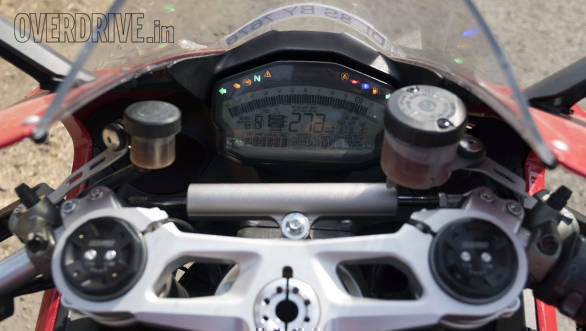
Then there is the Ducati Quickshifter or DQS that handles all upshifts with buttery smoothness. It doesn't handle downshifts though and if you want to, you can turn it off. Finally, Ducati also offer an optional telemetry package for track fiends who want to see their data to ride faster and better.
But how is to ride? It's brilliant. The 959 is a narrow motorcycle and the engine feels as alert as a much smaller one should. You ever get the sense of a big twin revving up and speeds build rapidly and fairly smoothly. Like all big bikes, lower gearing will make riding in our conditions easier, something to keep in mind when you're ready to replace the chain and sprockets in time.
The engine pulls smoothly and seamlessly from about 5,000rpm to the redline. This makes riding easy and natural whether you're going slowly in traffic or trying to find 2kmph extra at the end of the straight. In terms of a fast but friendly power delivery it's hard to imagine how you could improve on this. Indeed, 200kmph feels easy and composed and it's easy to be going more rapidly than you think until you get used to the feel and sound of the 959. In that sense, 157PS is a lot but it feels controlled and accessible. Where, for example, the 145PS of the Suzuki GSX-S1000 felt vastly more feisty and hence just a bit scary.

The primary issue with the 959 really is heat. It is by far amongst the hottest-running motorcycles we've tested. Temperatures on the coolant readout regularly hit 109-110°C though the engine never overheated on us. But that coil of the exhaust under the rider's seat radiates fire, as it were. In slow going, it's a roiling, baking heat and I regularly found myself having to "hang off" to the right with my knee out to get away from the heat. Given the design, there are no real fixes. But if it's this hot in full motorcycle gear, you flip-flop and shorts wearers are going to need help with your tandoori legs.
Ride, handling, comfort and braking
But when the corners come up, you'll not be thinking about the heat, I promise. Because the 959 is just lovely. The feedback from the bars and through the seat is lucid and your confidence in the motorcycle builds rapidly and is well-justified. You can lean very far over with great confidence and the Pirelli Diablo Rosso Corsas as well as the suspension are fantastic as long the roads are clean and the bumps are mild. Despite how intertia-free the turn in feels, the chassis stability at big lean angles is remarkable. It's almost as if the front-end is attached to the tarmac with glue or Velcro or something. I didn't like how EBC 1 made it feel off the gas but that is fixable. Given the wide and smooth spread of torque, punching hard out of the corners is as easy as pie with traction control always waiting to catch you if you overcook it. Most of the time the intervention is quiet enough for you to not notice the yellow warning lights on the top of the screen flashing at you.
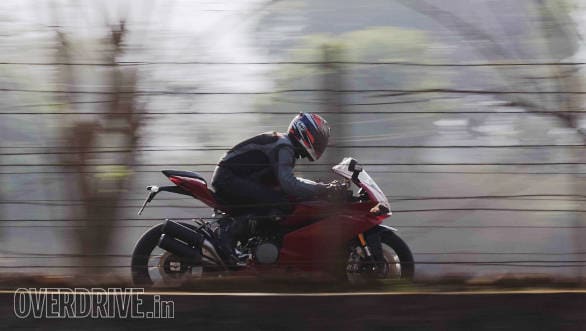
In short, on a mountain road or at the racetrack, the 959 feels perfectly suited to its task as a sportsbike. The fact that it feels smaller than the 675 Daytona, for instance, only makes it that much easier to ride under almost every condition.
Helping matters is the suspension. You normally expect sportsbike to have stiff setups bordering on the harsh but the 959, remember, was always expected to perform on the road as well. As a result, the base setup is compliant even though overall travel is limited and the it manages moderately bad roads better than you expect. Suspension at both ends is adjustable - you will need a screwdriver, a C-spanner and an Allen key to change settings. The Ducati manual has three settings, the base setting, a gentler road setting and a stiffer track setting. The latter is what we used at the Buriram track ride.
The brakes as you might expect are fantastic as well. The initial bite is strong but not overwhelming and there is no dearth of power. Ducati offer three modes with ABS 3 controlling both wheels and preventing lift. ABS 2 works on both wheels but is less aggressive while ABS 1 is race ABS - front wheel only and no rear lift mitigation.

Fundamentally, the 959 Panigale is an astutely engineered sports motorcycle. It's hard for me to imagine a supersport-class motorcycle that's this easy to ride on the street while feeling this focussed and precise on the track. To wit, a sport-naked might feel better on the street but at the track, the accuracy is always a wee bit less.
But could I tour on it? After all, this was part of my intent when I was in the market for one? That is a tough question. First, it isn't really designed for it although anecdotal evidence says sportsbikes on long tours is fairly common in Europe and the USA and I do know people here in India who do it. And good roads are essential for riders to persist in this endeavour, easier to find on that side of the planet. In India, it's harder work, to be sure.
The essential question is luggage and comfort. Not many people make side cases and luggage for sportsbikes but I would happily take a large tail bag and tank bag combination on for a tour.
Then comes comfort. I suspect that the 959 is not as committed in riding position as the 675 Daytona although the 939 Supersport will be even less committed. The 959 does place weight on your wrists and you do fold you legs back and high. But if you have a strong core or are just used to riding sportsbike a lot, the 959 will do highways as well.
Everyone else will either have to learn, get risers or look to other motorcycles. When I say learn, fitness is a part of the process. Remember that riding a 157PS sportsbikes fast and hard around a racetrack is exhausting unless you're on at least reasonable shape. So. Comfortable? Better than expected, to be honest but not everyone's cup of tea to be sure. Most certainly a hardcore choice for a daily ride.
Verdict
What a beautiful motorcycle the Ducati 959 Panigale proves to be. It's biggest issues will be the heat, the riding ergonomics and the cost of ownership. The rest is brilliant. The heat issue has no real solution and it's part of the package and you'll have to learn to live with it. I don't mind the idea that you'll have to always be in full gear to stave off the baking because ultimately all the gear all the time is a good policy.
The cost of ownership is because the Ducati way of bolting everything on to the engine and a wee monocoque makes working on the bike more complex. As a result, of all the Thai-sourced CBUs, the 959 carries the most expensive service charges. Deal breaker? Not to me, just something to keep in mind.
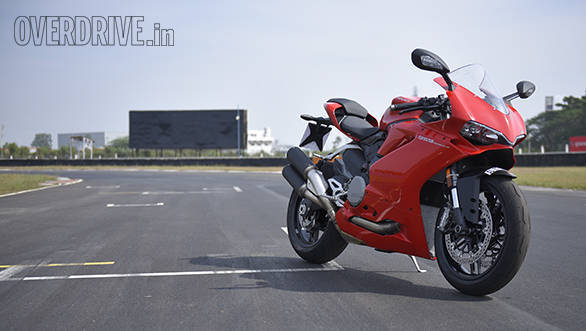
On every other count, the 959 is a stellar supersport. It has performance as well as ability and the whole suite of Ducati electronics to ensure you can use it all as safely as possible. The design chooses a savvy balance between all-out track ability and adequate street and highway chops as well. In fact, the 959's excellence and equipment also makes it a better purchase than the Triumph Daytona 675R which our sources tell us are on their last legs - either replacements are coming or Triumph is exiting the mid-sportsbike. So if you're in the mood for a sportsbike, you can hardly do better than the ?19.50 lakh (on-road Mumbai) Ducati 959 Panigale.
Images by Ishaan Bhataiya
Starts Rs 15,30,000
955cc
6-Speed
149.00
102.00
-NA-






